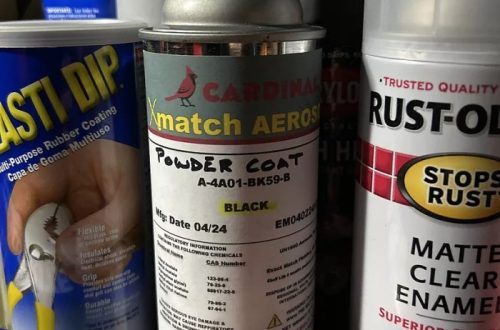Part 1: Understanding Watercolor Pencils
Watercolor pencils are a versatile and unique medium that combines the precision of a pencil with the fluidity of watercolors. Understanding the characteristics of watercolor pencils is essential to unleashing your creativity with this medium.
1. Water-soluble pigment:
Watercolor pencils are infused with water-soluble pigment. Once water is applied, the pigment dissolves and spreads like traditional watercolor. The water activates the pigment, allowing it to flow and blend on the paper. This feature enables artists to create beautiful watercolor effects. The use of water enhances the vibrancy and fluidity of the colors. The dissolved pigment can be manipulated with a brush to achieve various effects. Artists have the flexibility to control the intensity and transparency of the colors by adjusting the amount of water. Watercolor pencils offer the versatility of both dry and wet application. When activated with water, the pencils yield a transparent, flowing effect. The water-soluble nature of the pigment provides artists with a unique and dynamic tool for creating expressive and vibrant artworks. Overall, the water-soluble characteristic of watercolor pencils adds an exciting dimension to artistic expression.
2. Control and precision:
Watercolor pencils offer more control and precision than traditional watercolors. They allow for creating detailed lines and intricate designs. Artists can sketch and outline with watercolor pencils before activating the pigment with water. This technique provides a more controlled approach to incorporating water into the artwork. Using watercolor pencils allows for precise application of color. The ability to blend and layer colors with precision enhances the level of detail. Artists can achieve intricate patterns and textures using watercolor pencils. The controlled activation of the pigment with water ensures that the colors stay within the desired boundaries. This method allows for creating complex and detailed artworks with a high level of precision. In summary, the use of watercolor pencils provides artists with the ability to execute intricate designs and detailed artwork with exceptional control and precision.
Part 2: Techniques for Using Watercolor Pencils
There are various techniques for using watercolor pencils, each yielding different effects. Familiarizing yourself with these techniques will help you harness the full potential of this medium.
1. Dry application:
When using watercolor pencils dry, artists can create vibrant and detailed drawings. This method allows for precise lines and fine details. Layering different colors and blending them with a colorless blender pencil can produce rich and vivid colors. The dry application offers control over the intensity of the colors. Artists can achieve a greater level of detail and precision. Dry watercolor pencils are ideal for creating intricate patterns and textures. By varying pressure and layering, artists can build up depth and complexity. This technique provides versatility and allows for a wide range of artistic expressions. The dry application also facilitates the creation of bold and expressive lines. Overall, using watercolor pencils dry offers a unique approach to drawing, enabling artists to explore a wide range of techniques and styles while creating vibrant and detailed artwork.
2. Wet application:
When activated with water, dry pencil marks turn into translucent color washes. A wet brush can blend and manipulate colors. This process allows the creation of soft gradients and beautiful watercolor effects. The fluidity of the pigments allows for seamless transitions between colors. By controlling the amount of water, artists can achieve different intensities and textures. The water also helps to unify the colors and create a harmonious, flowing composition. Layering the watercolor pencil marks and then applying water can result in rich and vibrant hues. Artists have the flexibility to control the level of transparency and saturation by varying the amount of water used. Overall, activating the pigment with water opens up a world of artistic possibilities, enabling artists to create stunning and expressive watercolor effects with their pencils.
Part 3: Tips for Unleashing Creativity with Watercolor Pencils
Once you have a good understanding of watercolor pencils and the techniques for using them, it’s time to unleash your creativity. Here are some tips to help you make the most of this versatile medium.

1. Experiment with different papers:
The choice of paper greatly influences watercolor pencil artwork. Different textures and weights can impact the way pigment behaves. Experimenting with various papers is essential to understand how they affect the overall appearance of the artwork. Rough watercolor paper may provide a textured surface that influences the pencil strokes. Similarly, hot-pressed paper may yield different blending and layering results. The weight of the paper can affect how much water it can withstand and how it holds the pigment. Thicker paper may resist warping when wet, preserving the integrity of the artwork. Ultimately, finding the right paper for your watercolor pencil work is crucial for achieving the desired effects and ensuring the longevity of your pieces. Experimenting with different paper types can enhance your understanding of how to optimize the potential of watercolor pencils and create captivating artwork.
2. Combine with other mediums:
Watercolor pencils offer a unique approach to creating expressive and lifelike portrait studies. Their versatility allows artists to experiment with layering and blending colors to capture intricate details, such as facial features and textures. By activating the pigment with water, the pencils can achieve a soft and delicate quality, adding depth and dimension to the portraits. The ability to seamlessly transition between pencil and watercolor techniques provides a dynamic range of effects, allowing for greater expressiveness in portrait work. Artists can explore various styles, from photorealistic renderings to more abstract and interpretive approaches, using watercolor pencils to infuse their portraits with rich, nuanced colors and textures. Whether capturing the subtle nuances of skin tones or the play of light and shadow, watercolor pencils present an exciting opportunity for artists to create compelling and evocative portraits that showcase their unique style and vision.

Part 4: Project Ideas for Using Watercolor Pencils
If you’re looking for inspiration for using watercolor pencils, here are some project ideas to get you started.
1. Nature-inspired artwork:
Watercolor pencils are an excellent choice for creating stunning botanical illustrations and landscape paintings. Their versatility allows for capturing the intricate details of leaves, flowers, and natural elements with precision. By layering and blending colors before activating them with water, artists can achieve a lifelike and vibrant portrayal of botanical subjects. The ability to switch seamlessly between colored pencil and watercolor techniques provides a unique advantage when working on intricate nature-themed pieces. Whether depicting the lush foliage of a garden or the serene beauty of a landscape, watercolor pencils offer artists the flexibility to explore and experiment with various styles and approaches. The range of hues and tones available in watercolor pencil sets facilitates the creation of rich, nuanced botanical artworks, adding depth and realism to the illustrations.
2. Portrait studies:
Watercolor pencils offer a unique approach to creating expressive and lifelike portrait studies. Their versatility allows artists to experiment with layering and blending colors to capture intricate details, such as facial features and textures. By activating the pigment with water, the pencils can achieve a soft and delicate quality, adding depth and dimension to the portraits. The ability to seamlessly transition between pencil and watercolor techniques provides a dynamic range of effects, allowing for greater expressiveness in portrait work. Artists can explore various styles, from photorealistic renderings to more abstract and interpretive approaches, using watercolor pencils to infuse their portraits with rich, nuanced colors and textures. Whether capturing the subtle nuances of skin tones or the play of light and shadow, watercolor pencils present an exciting opportunity for artists to create compelling and evocative portraits that showcase their unique style and vision.

In conclusion, watercolor pencils are a fantastic medium for artists of all skill levels. By understanding their characteristics, mastering various techniques, and experimenting with different projects, you can unleash your creativity and create stunning artworks. Whether you’re a beginner or an experienced artist, watercolor pencils offer endless possibilities for artistic expression. So, grab your watercolor pencils and start exploring the beautiful world of this unique medium.




